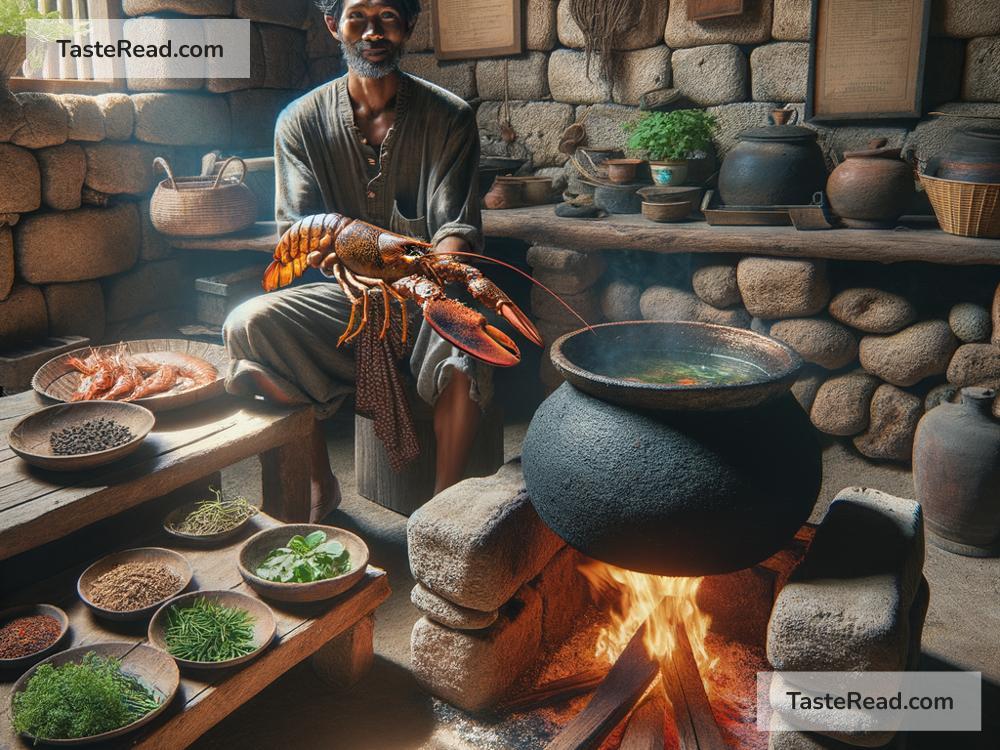The Origins of the First Lobster Dish in Ancient Tales
Lobsters are often seen as a luxury food today, served in fancy restaurants and loved by food enthusiasts worldwide. However, their story stretches far back to ancient tales and traditions, when lobsters were not viewed as a special treat but as a humble source of food. The origins of the first lobster dish are wrapped in history, culture, and a little bit of mystery.
Ancient Lobster: Food for the Poor
In ancient times, lobsters were not considered the delicacies we enjoy today. These sea creatures were plentiful along the coasts of many regions, including the Mediterranean, North America, and Southeast Asia. Their abundance made them easy to catch and widely available, especially for people living near the shore. In fact, lobsters were often regarded as the “poor man’s protein.” They were cheap, sometimes even used as fertilizer for crops instead of food!
Fishing for lobsters was simple back then. Ancient fishermen used traps and nets or simply picked them off the rocky shores. Once caught, they would cook lobsters using very basic methods, like roasting them over fire or boiling them in seawater. These early lobster dishes may not have been glamorous, but they were practical and nutritious.
Lobster in Mythology and Ancient Tales
Lobsters also appear in mythologies and ancient tales. In many coastal cultures, seafood played a central role not just in people’s diets but also in their stories and traditions. Ancient Greeks and Romans believed that creatures of the sea, including lobsters, were gifts from the gods. These animals symbolized abundance, fertility, and the mysterious beauty of the ocean.
For example, some historians suggest that lobsters may have been part of the elaborate feasts described in Greek and Roman texts. While these records don’t detail specific recipes for lobster, they talk about communal banquets where foods from the sea were celebrated. Ancient cooks likely prepared lobsters by boiling, grilling, or serving them with herbs and olive oil, common ingredients in their culinary traditions.
The First Lobster Dish in History?
Pinning down the “first” lobster dish in history is tricky because early civilizations didn’t leave behind cookbooks the way we do today. However, archaeological evidence and written accounts give us clues.
One such clue comes from ancient China, where seafood was highly valued in imperial banquets. It’s believed that lobsters were steamed and served with simple sauces, such as ginger and soy, creating a dish that blended the natural sweetness of the lobster with aromatic flavors. Similarly, in ancient Egypt, lobsters might have been cooked alongside other seafood in large clay ovens or boiled in copper pots. Egyptian hieroglyphs even depict scenes that include fishing and food preparation, hinting that crustaceans like lobsters may have been part of their meals.
In North America, Indigenous peoples along the Atlantic coast were known to gather lobsters and cook them by placing them on heated rocks and covering them with seaweed. This method—often considered the precursor to the modern “clam bake”—allowed the lobster to steam slowly, creating tender meat and a smoky flavor. Over time, this cooking style evolved into a communal tradition, shared among local tribes.
The Transformation of Lobster’s Status
For hundreds of years, lobsters remained a food for impoverished communities and people living near the ocean. But all of this changed as cultures evolved and tastes became more refined. By the 17th and 18th centuries, European aristocrats were beginning to appreciate lobster for its unique flavor. Wealthy families started demanding lobster dishes in banquets, pairing the crustacean with butter, garlic, and wine. This marked a dramatic shift—from seeing lobsters as “trash food” to elevating them to a delicacy.
French chefs in particular popularized lobster on fine dining menus, experimenting with elaborate sauces, broths, and delicate cooking techniques. Lobster bisque, a creamy soup made from lobster shells and meat, became one of the first truly iconic lobster dishes in European kitchens. Lobster’s reputation only grew from there.
Lobster in Modern Times
Although the first lobster dishes of ancient times were humble and simple, they laid the foundation for the rich culinary traditions we enjoy today. Over the centuries, people learned to appreciate the lobster’s sweet meat, experimenting with flavors and cooking methods. Lobster Thermidor, Lobster Rolls, Lobster Ravioli—these famous recipes all have their roots in humanity’s earliest attempts to cook and enjoy this fascinating crustacean.
Today, lobster is a symbol of celebration and indulgence. Yet, its journey from ancient shores to our plates reminds us that even the most luxurious things can come from humble beginnings.
Final Thoughts
The first lobster dish wasn’t fancy, and it probably wasn’t served at a banquet. It was likely a simple meal—lobster boiled in seawater, roasted over a fire, or steamed under rocks. But this simple food sustained ancient communities and became a cornerstone of their cultures and traditions. From these humble beginnings, lobsters have gone on to conquer kitchens worldwide, earning their place as one of the most sought-after foods in the modern world.
So, the next time you enjoy a lobster dish, whether it’s dripping in butter or paired with elegant sauces, take a moment to appreciate the history behind it. These crustaceans have come a long way—from rustic meals by the shore to fine dining experiences fit for royalty!


